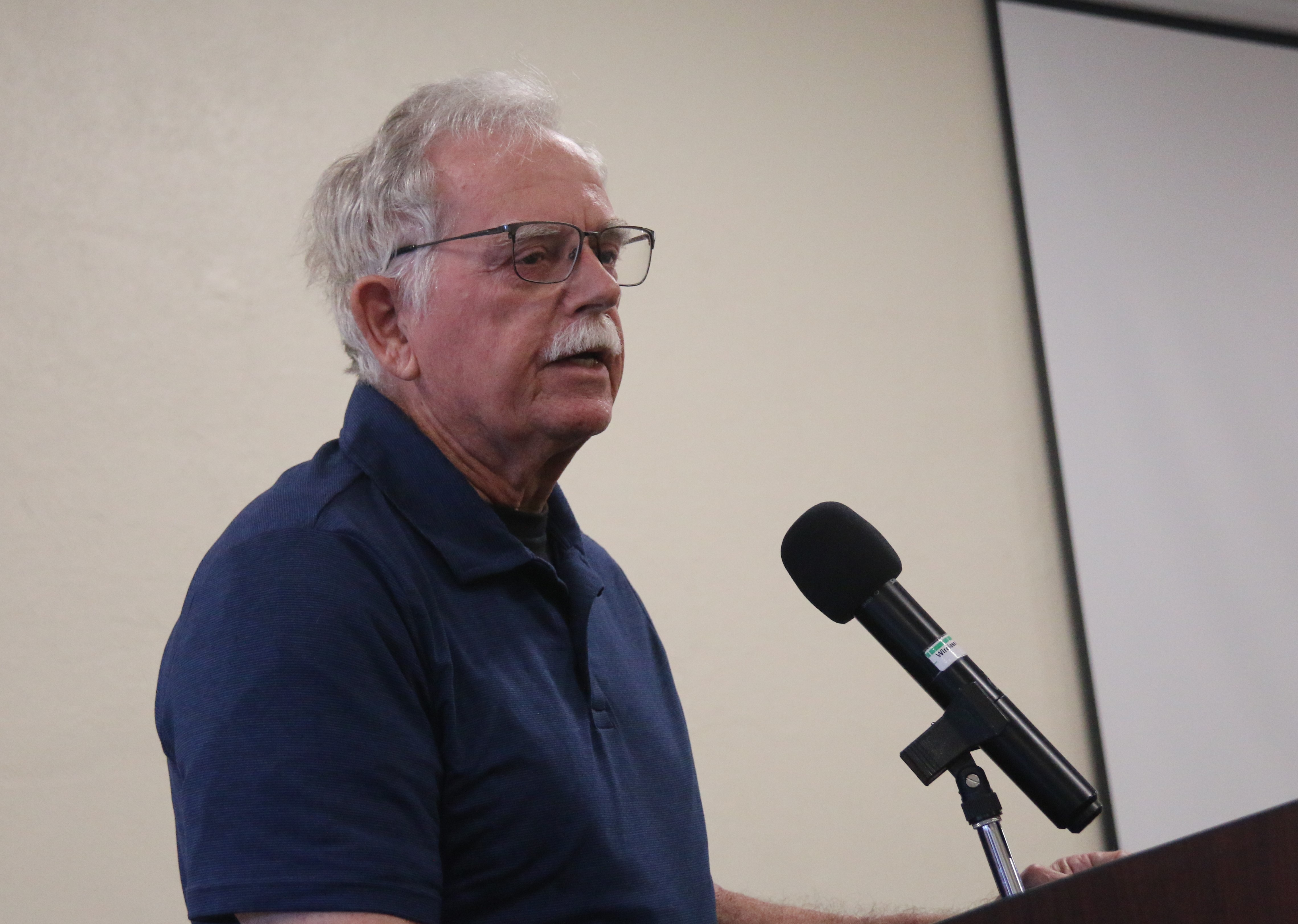

UPPER LAKE >> This rural town is being groomed for a developing technology that only recently made significant advances that makes harnessing power a profitable market yet has existed for 80 plus years.
Biochar is a process that uses tree waste or debris from trees, often processed in a chipping machine and then reducing it to very small particles. The process can power generators and other applications including agriculture. This was the focus of the Western Region Town Hall Wednesday.
But despite an exciting prospect of this new industry, skepticism abounds, whether the industry can achieve what is being proposed without causing more harm than it can achieve. One location of the processing plant is slated for 755 Highway 20 near the Running Creek Casino area. WRTH council member Claudine Pedroncelli noted a lot of people in the area are unaware of the plans and did not see an initial study done for particulate matter that may possibly spew into the air. Pedroncelli cited other issues, it’s an agricultural area and a flight corridor for a variety of birds. And if the particulates are not contained sufficiently what becomes of the county’s clean air? “It’s the one thing we boast about most,” she said.
Other issues are about semitrucks expected to come down Elk Mountain Road, emissions from diesel engines and road damage. Pedroncelli went on to state that residents should be given more information before rational discussions begins. “I hope this proposal will be fully vetted and the public health will be the concern of all regulatory authority,” she said. “The plant operation is seven to 10 hours a day.”
However, Tom Jordan, representing the Scott’s Valley Band of Pomo Indians who wholly own the Scott’s Valley Energy Corporation and is the proprietor of Jordan Vineyards and Winery, said the particulate matter should not be a concern. The proposed gasification procedure uses a process called Pyrolysis, Pyrolysis is a chemical decomposition process of organic materials through the application of heat in the absence of oxygen, a first step in gasification.
“We do that in a sealed chamber, from a wide variety of sources, do it from chips ground down to a small size and the cylinder is heated to 600 degrees. One of the by-products is biochar, with multiple applications, one to power a generator to produce electricity. “So, there’s nothing to impact the air quality,” he said. “The project is carbon neutral, and it becomes carbon negative when we take that biochar and sequester it in the soil or use it in water filtration systems. Our site is owned by the Watershed Protection district.”
Advisory council member Kathryn Parankema inquired if there has been a biochar plant in operation the last five years in California. “Where do we go to get background on what you propose,” she asked. “Do you have any data if a plant is up and running (for gasification), how close to residents is this?”
“We proposed this area because of the minimal population and agricultural area,” Jordan replied. Yet Parankema, pointed out, there are no plants in California using gasification using biochar every day and also wondered if the process has just industrial application or some agricultural application. “I think what we are missing here, is an actual plant that’s up and running.”
Several audience members raised concerns over whether there is a plant operation planned for Red Hill. Jordan explained he hoped that site is where the first continuous operations will be based, and they are awaiting final approval of a major use permit. “All fuel sources will be clean, no emissions except a small amount to create electricity,” he said.
Yet Parankema maintained it sounded too magical for words because to generate heat a process must first dissipate heat and sustain it, and how to retain the dissipation and still have net zero environmental impact. “I don’t understand how you can accomplish this transfer of heat, when they can’t do it on the Pacific Ocean with nuclear plants,” she said. “I’m not sure where you are going to have this heat created. Are you’re sure it’s not going to be released into Clear Lake, or the ambient air over Upper Lake?
Larry Kanh has been an Upper Lake resident for 18 years. He is a former certified public accountant, now retired and operates a hay farm. He said he left 25 or 30 voice mails regarding the site but never got a reply. “The reason I called was because I wanted to expand my hay business into those fields,” he recalled. “What I wanted to know was what they paid for the lease?” Kahn later discovered the Scott’s Valley Energy Corp. paid $1 a year for their lease.
“How did they get that,” he wondered. “It’s ridiculous. What about market rates? Another example of missed opportunities. How do you get away with something like that? … unless it’s some kind of a grant. I hope the county could do a better job.”




